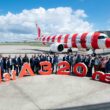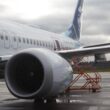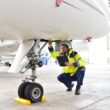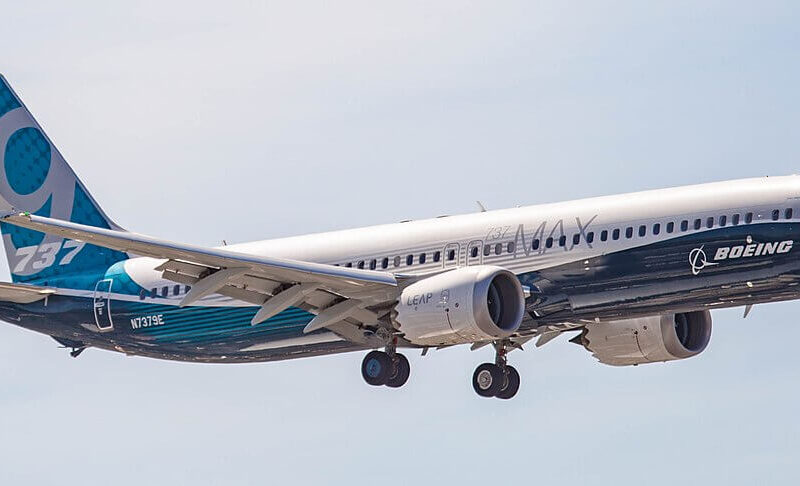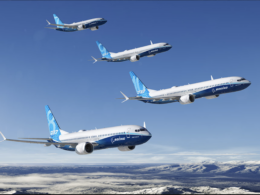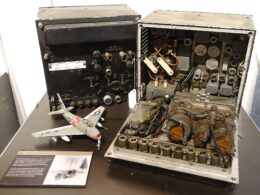IAG, The parent company of British Airways, signs an LOI for 200 Boeing 737 MAXs
The 53rd Paris Air Show is quite unusual. While every air show previous to this was a commercial battleground between Airbus and Boeing, this year Boeing’s main focus is to regain the confidence of airlines around the world.
After a disturbing chain of events when 2 of their Boeing 737 MAX’s crashed in Indonesia, and later in Ethiopia, 2019 has been a very difficult year for Boeing.
While the American manufacturer is preparing the MAX to return to service with a new software update, it can barely find space to park their still-grounded aircraft.
Nevertheless, since the aviation authorities have grounded the Boeing 737 MAX, airlines have shown zero interest in the new jet.
Until the 53rd Paris Air Show.
IAG becomes the Icebreaker
On the 2nd day of the Paris Air Show, IAG and Boeing stunned the whole world.
The two parties have announced that IAG has placed a letter of intent to order 200 Boeing 737 MAX aircraft, subject to a formal agreement.
IAG, the airline group that owns British Airways, Aer Lingus, Iberia, LEVEL and Vueling has stated that the single-aisle aircraft will join the short-haul fleet of LEVEL, Vueling and British Airways’ operations at Gatwick Airport.
The deal has raised some questions, yet at the same time, it answered others.
Branding of the 737 MAX
The moment the two companies announced the Letter of Intent, it became clear that airlines and their parent companies will try to avoid using the MAX branding.
The official designation of the Boeing 737 MAX is 737 MAX 7, 737 MAX 8, 737 MAX 9 and so on.
However, the aviation community has named the aircraft in various ways – from calling it the Boeing 737 MAX, Boeing 737 MAX-8 or even just the Boeing 737-8.
IAG has resorted to announcing the deal on their website by using the Boeing 737-8 and 737-10 (the two different variants they’ve ordered) names. The company has completely refrained from using the MAX designation in their announcement:
“The mix of 737-8 and 737-10 aircraft would be delivered between 2023 and 2027 and would be powered by CFM Leap engines.”
Meanwhile, Boeing has added the MAX designation in the press release:
“In selecting the 737 MAX, IAG says it will fly a combination of the 737 MAX 8, which seats up to 178 passengers in a two-class configuration, and the larger 737 MAX 10 jet […]”
There is a reason why the two press releases, announcing the same deal, have such a critical difference.

Negative and Positive Publicity
Starting from IAG’s perspective, the message is clear – the airline group wishes to avoid the negative publicity from passengers of the 5 airlines, as travelers might still be very careful and attentive when choosing the aircraft they travel on.
Airlines still cannot use the Boeing 737 MAX for commercial flights. However, eventually, as the grounding lifts, carriers will try to get the aircraft to fly A.S.A.P. But passengers might think twice before getting on a MAX, as a result of the constant downstream of shocking headlines about the Boeing 737 MAX.
For example, a month ago, Southwest Airlines (LUV) announced that any passengers that are scheduled to fly with the Boeing 737 MAX will be able to switch their flights to any other aircraft type if they wish to do so. Southwest Airlines (LUV) will not charge them extra for this change.
Airlines around the world that either operated the MAX before the accidents or have pending deliveries for the grounded jet will definitely try to avoid using the MAX designation in any public space.
Positive vibes only
On the other hand, the deal is a great opportunity for Boeing to rebuild their public image. The IAG deal was the first order ever since March for the MAX and the manufacturer has used the opportunity to start shifting the public image of the 737 MAX. Most importantly, it also started shifting the image of the aircraft in the eyes of airlines that might look into ordering the MAX.
Boeing’s press release has quite a few positive words about the newest iteration of the 737:
“The 737 MAX incorporates the latest technology CFM International LEAP-1B engines, Advanced Technology winglets and other improvements to deliver the highest efficiency, reliability and passenger comfort in the single-aisle market. The 737 MAX is 14 percent more fuel-efficient than today’s most efficient Next-Generation 737s, and 20 percent better than the original Next-Generation 737s when they entered service.”
Yet out of the 590 words in the press release, not a single one mentions that the aircraft is currently grounded.
Understandably so – Boeing has burned many bridges with airlines, pilots, flight attendants passengers after the Boeing 737 accidents that have claimed 346 innocent lives. Ever since the groundings in March, Boeing’s executives are on a tour on TV, private meetings with unions and social media to rebuild those bridges.
Dennis Muilenburg, @BoeingCEO, experienced first-hand our MCAS software update performing safely in action during a 737 MAX 7 demo flight today.
More about the proposed MCAS software update here: https://t.co/TJrfcYG4ok pic.twitter.com/OcCiMnc7I5
— The Boeing Company (@Boeing) April 3, 2019
While it might look like customers are regaining trust, there might be one more reason why suddenly IAG is interested in purchasing quite a few of Boeing 737 MAXs.
Reminiscence of the early 2000s
After the saddening events on September 11th, 2001, the aviation industry entered a slump. Passenger numbers went down, airlines saw reduced profits and the general public did think twice before getting on an aircraft.
Consequently, many airlines in the United States declared bankruptcy – the downturn in traffic has either directly or indirectly caused top carriers in North America to operate under Chapter 11 protection.
Aircraft manufacturers also had difficulties selling their planes.
For example, airlines in 1999 ordered 234 Boeing 737s. The year after, the number has risen to 374.
However, in 2001 the number went down to 188. Next year it was even lower and airlines ordered only 162 737‘s.
Nevertheless, aircraft manufacturers have to sell their planes. The situation is no different today – it is a widely known fact that Boeing still produces MAX aircraft, but is constantly having to come up with new and creative ways to store them somewhere.
And Boeing found a customer that was more than happy to provide them with a huge order.
At the beginning of 2002, Ryanair announced that they signed an agreement with Boeing to purchase 100 new Boeing 737s with 50 more options. Reading Ryanair‘s financial report from 2002, the report states:
“Boeing has granted the Company certain price concessions with regard to the 737-800 aircraft being purchased under the 2002 Boeing contract.“
Meaning that Ryanair received a massive discount for the aircraft, as Boeing struggled to ship them off.
Boeing‘s discount to IAG
And it is widely speculated that IAG has ordered these aircraft with a good reason – Boeing once again provided a massive discount. While Boeing will only start delivering the 737 MAX to IAG‘s airline brands in 2023, the manufacturer surprised everyone, including Airbus.
At the end of the trading show part of the Paris Air Show, Airbus has hosted a conference on Thursday to discuss the show and their results during those 3 days.
Even though Airbus saw a lot of success with the Airbus A321XLR, as airlines ordered more than 250 A321XLR aircraft after Airbus announced the jet on Monday, smiles at Airbus’ table were few and far between.
When speaking with journalists about the massive IAG order, the Chief Commercial Officer of Airbus, Christian Scherer has said that Airbus “would like a chance to compete for that business.”
So, shockingly, IAG did not even approach Airbus for the options to overhaul their short-haul fleet.
We can only speculate as neither Boeing nor will IAG release the exact prices of the deal. But it’s fairly obvious that Boeing made an offer that he (IAG) can’t refuse.
The basis might be different from the 2002 Ryanair order, but the goal is the same – to kick start a sale campaign of the Boeing 737 MAX.
And only time will tell whether the IAG’s letter of intent will help Boeing sell more 737 MAX aircraft, as the Chicago-based manufacturer tries to solve its crisis.

